Discover the Best Native Shrubs Western Australia for Your Garden
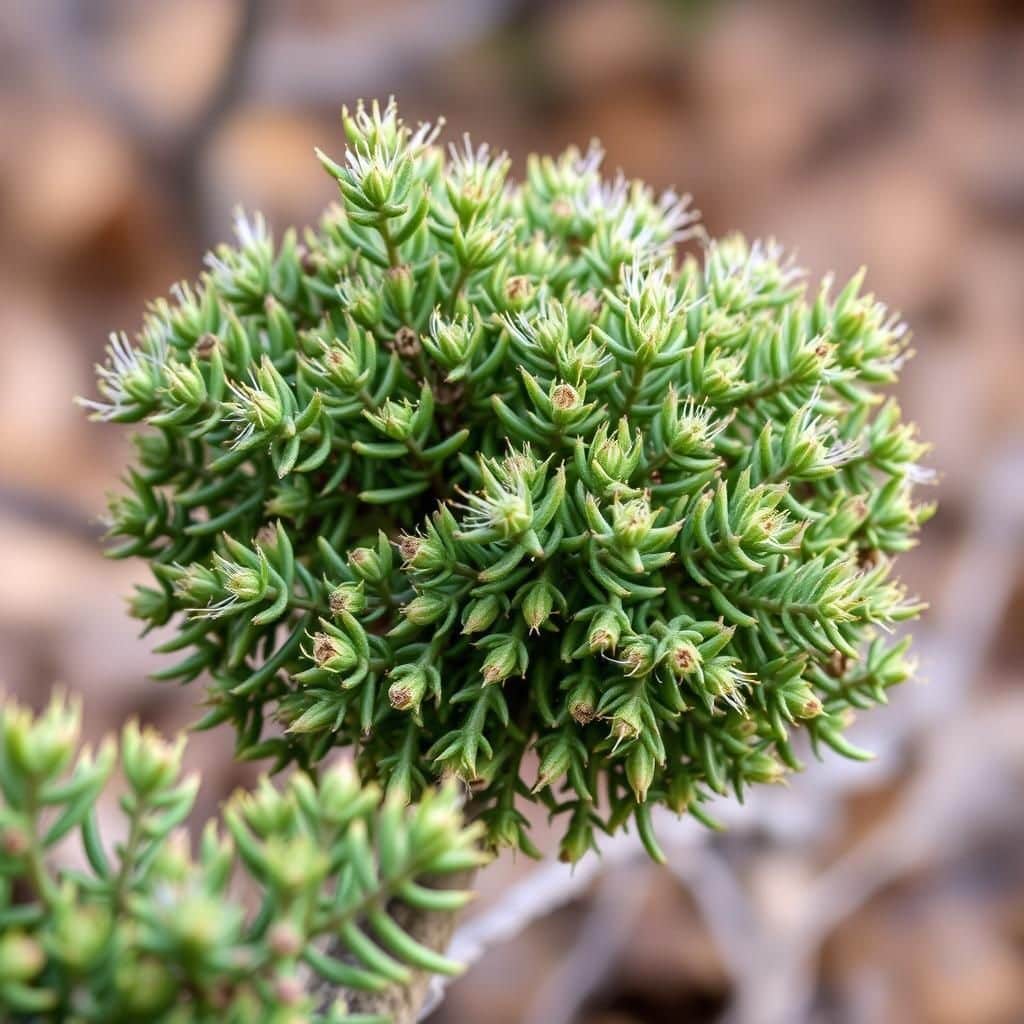
Western Australia is renowned for its unique and diverse flora, making it an ideal region for incorporating native shrubs into your garden. These resilient plants not only thrive in the local climate but also support the ecosystem by attracting native wildlife. From vibrant blooms to striking foliage, Australia's native shrubs offer a variety of options that enhance both aesthetics and sustainability in your outdoor space. In this article, we will explore some of the best native shrubs that can transform your garden into a stunning, environmentally friendly haven, perfect for both seasoned gardeners and beginners alike.
- Native Shrubs of Western Australia
- What is the best Australian native shrub?
- What is the spiky bush in Western Australia?
- What are the most common native trees in Western Australia?
- Eucalyptus Trees
- Marri Trees
- Wandoo trees, or Eucalyptus wandoo, are adaptively found in the south-west of Western Australia. They are known for their smooth bark, which sheds in strips, and their vibrant foliage. Wandoo trees provide habitat for native fauna and are important in traditional land management practices. Habitat for endangered species - Supports various wildlife, including birds and insects. Timber production - The hardwood is valued for flooring and cabinetry. Cultural significance - Used in Aboriginal cultural practices.
- Acacia Trees
- What flowers are native to Western Australia?
- Questions from Our Readers
Native Shrubs of Western Australia
Western Australia is home to a diverse range of native shrubs that have adapted to the unique climatic and soil conditions of the region. These shrubs play a crucial role in maintaining ecosystem stability, providing habitat for wildlife, and contributing to the overall biodiversity of the area. Among the most notable species are the Hakea, Grevillea, and Melaleuca, which exhibit various forms, colors, and growth habits. Their ability to thrive in poor soils and withstand drought conditions makes them vital for landscape restoration and conservation efforts. Furthermore, many of these native shrubs have cultural significance to the Indigenous peoples of Australia, who have utilized them for food, medicine, and crafting materials.
Ecological Importance of Native Shrubs
Native shrubs in Western Australia play a pivotal role in the ecosystem by providing shelter and food for various animal species. They are instrumental in soil stabilization, reducing erosion, and improving soil fertility through their organic matter. Additionally, these shrubs contribute to the carbon cycle by absorbing carbon dioxide during photosynthesis, helping mitigate climate change effects. The diverse habitats created by native shrubs support a wide range of bird, insect, and mammal species, promoting rich ecological interactions.
Common Native Shrub Species
Among the most common native shrubs found in Western Australia are Acacia species, known for their rapid growth and nitrogen-fixing abilities, and Banksia, which attracts numerous pollinators with its distinctive flowers. The Grevillea group offers vibrant blooms and diverse forms, while the Hakea exhibits unique foliage and sturdy wood. Each of these species is adapted to specific environmental conditions, showcasing the botanical diversity of the region and their ability to thrive in challenging climates.
Uses of Native Shrubs
Native shrubs serve various practical uses in Western Australia, ranging from horticultural applications to traditional uses by Indigenous communities. Many shrubs produce seeds, fruits, and leaves that can be used for culinary purposes, while others are valued for their medicinal properties. Additionally, their resilience makes them ideal candidates for landscaping and erosion control projects, enhancing both aesthetic appeal and ecological functionality in urban and rural settings.
Cultivation and Garden Design
Incorporating native shrubs into garden designs promotes local biodiversity and supports sustainable landscaping practices. By using local plant species, gardeners can create an environment that reflects the natural flora of Western Australia while minimizing water usage and the need for chemical fertilizers. Furthermore, these native plants require less maintenance once established, making them an excellent choice for sustainable gardens that prioritize environmental health.
Conservation Challenges
Despite their importance, many native shrub species in Western Australia face threats from habitat loss, invasive species, and climate change. Urban development and agricultural expansion have diminished their natural habitats, leading to a decline in plant populations. Conservation efforts are essential to protect these unique plants, involving habitat restoration projects, seed banks for native species, and community education to raise awareness about the importance of preserving Western Australia's botanical heritage.
| Common Name | Scientific Name | Habitat | Height |
|---|---|---|---|
| Acacia | Acacia species | Woodlands, scrublands | 1-10 m |
| Banksia | Banksia species | Coastal heath, woodlands | 1-15 m |
| Grevillea | Grevillea species | Forests, woodlands | 1-8 m |
| Hakea | Hakea species | Heath, forests | 1-6 m |
| Melaleuca | Melaleuca species | Swamps, wetlands | 1-10 m |
What is the best Australian native shrub?
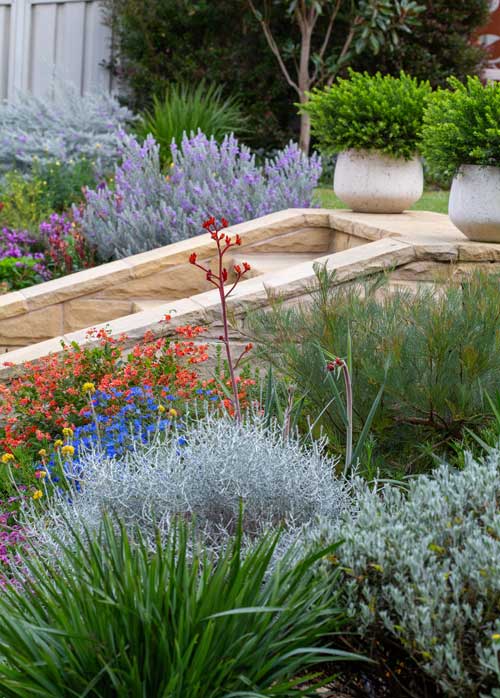
The best Australian native shrub is often considered to be the Melaleuca species, particularly the Melaleuca alternifolia, commonly known as the tea tree. This shrub is highly valued not only for its aesthetic appeal but also for its numerous beneficial properties. The tea tree shrub is recognized for its resilience in various soil types and its ability to thrive in Australia's diverse climates. Its essential oils are well-known for their antimicrobial and anti-inflammatory properties, making it popular in natural medicine and skincare.
Characteristics of Melaleuca Alternifolia
The Melaleuca alternifolia boasts distinctive features that set it apart from other shrubs.
- Leaves: The leaves of this shrub are narrow, elongated, and aromatic, contributing to its fragrant profile.
- Flowers: It produces showy white or cream-colored flowers that attract various pollinators, enhancing the ecological value of gardens.
- Size: Typically, this shrub can grow between 2 to 4 meters tall, with a bushy appearance that makes it ideal for hedging or screening.
Ecological Benefits
The tea tree shrub plays a significant role in the Australian ecosystem.
- Habitat: It provides shelter and food for various fauna, including birds and insects.
- Sustainability: As a native species, it is well-adapted to local conditions, requiring less water and maintaining soil health.
- Pollination: Its flowers are a nectar source for pollinators, promoting biodiversity in the area.
Cultural Significance
Melaleuca alternifolia holds cultural relevance for Indigenous Australians.
- Traditional Use: Indigenous communities have used tea tree leaves for centuries for medicinal purposes, including treating cuts and infections.
- Spiritual Importance: The shrub is often associated with healing and has been integrated into various cultural practices.
- Aesthetic Value: It is frequently used in traditional ceremonies and art, symbolizing connection to the land.
Uses in Landscaping
Due to its appealing features and low maintenance needs, the tea tree shrub is popular in landscaping.
See also: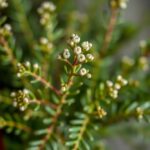
- Hedges: Its dense foliage makes it an excellent choice for privacy hedges or windbreaks.
- Drought Tolerance: Ideal for Australian gardens, it requires minimal watering once established.
- Attracts Wildlife: Planting it can promote a thriving garden atmosphere filled with birds and beneficial insects.
Care and Maintenance
Caring for a Melaleuca alternifolia is relatively simple, making it a favored choice for gardeners.
- Soil Type: It thrives in well-drained soils and can tolerate poor soil conditions.
- Watering: Regular watering is beneficial, but it is drought-tolerant once established.
- Pruning: Light pruning after flowering helps maintain a bushy shape and encourages new growth.
What is the spiky bush in Western Australia?

The spiky bush commonly referenced in Western Australia is Grevillea, particularly species like Grevillea preissii or other related varieties. These plants are known for their distinctive spiky appearance, with serrated leaves and often vibrant, tubular flowers. The spiky habitat is a significant part of the region's biodiversity and is adapted to the unique climate conditions present in Western Australia, especially the dry conditions and sandy soils.
Characteristics of Spiky Bushes
The spiky bushes found in Western Australia exhibit several key characteristics that enable them to thrive in their native environments. These features include:
- Foliage: The leaves are often narrow with sharp tips, enhancing their spiky appearance.
- Flowers: Flowers can vary in color from red to yellow and are usually tubular, attracting various pollinators.
- Growth Habit: They can grow as shrubs or small trees, providing a unique silhouette in the landscape.
Ecological Importance
Spiky bushes play a crucial role in the ecosystem of Western Australia. Their importance includes:
- Habitat: They provide essential refuge and sustenance for various wildlife species.
- Pollination: The flowers attract bees, birds, and other pollinators that play a vital role in the environment.
- Soil Stability: The root systems help prevent soil erosion, maintaining the integrity of the local landscape.
Cultural Significance
The presence of spiky bushes in Western Australia is not only ecological but also holds cultural significance. This is evident in:
- Indigenous Use: Many Indigenous communities utilize species of Grevillea for food, medicine, and crafting materials.
- Landscaping: They are popular in gardens for their unique aesthetic and low-water requirements.
- Symbolism: The resilience of these bushes is often viewed as a symbol of endurance in harsh environments.
Adaptations to Dry Conditions
Spiky bushes are well-adapted to the arid climate of Western Australia. Some of their adaptations include:
- Drought Resistance: These plants have evolved mechanisms to conserve water, such as deep root systems.
- Leaf Structure: The tough, waxy leaves reduce water loss and protect against herbivores.
- Growth Cycle: Many species can enter a dormant phase during particularly dry seasons.
Conservation Efforts
Given their ecological role and beauty, there are ongoing conservation efforts focused on the preservation of spiky bushes in Western Australia:
- Habitat Protection: Many regions are designated as protected areas to preserve their natural habitats.
- Research Programs: Studies are conducted to understand their ecology and response to climate change.
- Public Education: Awareness programs emphasize the importance of native plants and their conservation.
What are the most common native trees in Western Australia?
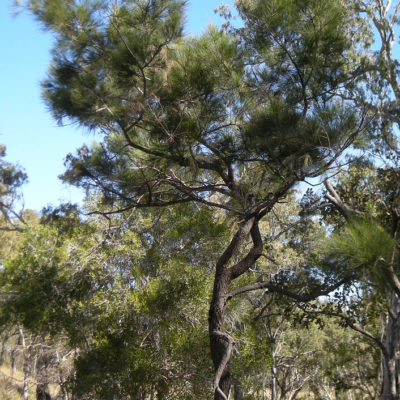
Western Australia is home to a diverse range of native trees, many of which are significant not only ecologically but also culturally and economically. The most common native trees in this region include species that are well adapted to the local climate and soil conditions, showcasing a variety of features and uses.
Eucalyptus Trees
Eucalyptus trees are perhaps the most iconic native trees of Western Australia. They comprise numerous species, each adapted to different environments across the state. These trees are known for their fast growth, tall stature, and distinctive aromatic leaves. The bark can range from smooth to rough, and they often feature colorful flowers that attract various wildlife.
- Eucalyptus marginata - Commonly known as Jarrah, this tree is prized for its hard timber.
- Eucalyptus diversicolor - Known as Karri, it is one of the tallest tree species in the world.
- Eucalyptus obliqua - Also known as Messmate, it's valued for its resilience in harsh conditions.
Marri Trees
The Marri tree, or Corymbia calophylla, is another important native species in Western Australia. This tree is characterized by its large flowers, which can be white or cream in color, and its hardwood, which is highly durable. Marri trees are known for their ability to survive in poor soil, making them a critical component of many local ecosystems.
- Pollinator support - The flowers attract a variety of bird species, such as honeyeaters.
- Timber use - The wood is used in furniture making due to its strength.
- Wildlife habitat - Provides shelter for numerous animal species.
Wandoo trees, or Eucalyptus wandoo, are adaptively found in the south-west of Western Australia. They are known for their smooth bark, which sheds in strips, and their vibrant foliage. Wandoo trees provide habitat for native fauna and are important in traditional land management practices.
See also: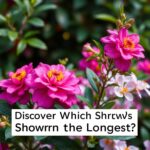
- Habitat for endangered species - Supports various wildlife, including birds and insects.
- Timber production - The hardwood is valued for flooring and cabinetry.
- Cultural significance - Used in Aboriginal cultural practices.
Sheoak trees, known as Allocasuarina species, are crucial for stabilizing sandy soils in Western Australia. Their long, needle-like leaves and unique conical cones distinguish them from other native trees. These trees are often planted in rehabilitation projects and provide essential habitat for birds and small mammals.
- Soil stabilization - Helps prevent erosion in coastal and sandy areas.
- Wildlife resources - Offers food and shelter for various animals.
- Windbreaks - Commonly used in agricultural areas to protect crops from wind.
Acacia Trees
Acacia trees, also known as wattles, are abundant in Western Australia. They showcase a variety of flower colors, from yellow to cream, and are known for their fast growth rates. These trees are integral to the ecosystem, providing nectar for pollinators and food for a range of wildlife.
- Biodiversity support - Essential for many species of birds and insects.
- Soil improvement - Fix nitrogen in the soil, enhancing fertility.
- Traditional uses - Acacia seeds have been used for food and medicinal purposes by Indigenous Australians.
What flowers are native to Western Australia?

Western Australia is renowned for its stunning and diverse array of native flora, particularly its unique flowers that flourish in various habitats across the region. The climate, ranging from coastal to arid, allows a rich tapestry of species to thrive, making it a hotspot for botany enthusiasts and ecologists.
Unique Wildflowers
Western Australia is famous for its unique wildflowers, which bloom in spectacular displays, particularly during the wildflower season from August to November. These flowers include:
- Hakea: Known for their striking inflorescences, these are woody shrubs that attract a variety of wildlife.
- Grevillea: A diverse genus with various species, they are celebrated for their colorful blooms and nectar-rich flowers, appealing to birds and insects.
- Waratah: This large flower is characterized by its brilliant red blooms and is known for its resilience in tough environmental conditions.
Endangered Native Flowers
Sadly, some native flowers in Western Australia are classified as endangered due to habitat loss and environmental changes. Efforts are underway to protect these species, which include:
- Orchid species: Many orchids found in the region are sensitive to environmental shifts and require specific conditions to thrive.
- Verticordia: This genus consists of several threatened species, known for their intricate flower structures and stunning colors.
- Caladenia: Also known as spider orchids, some species are at risk and require conservation measures for their survival.
Indigenous Uses of Native Flowers
The indigenous peoples of Western Australia have long utilized native flowers for various purposes, including:
- Medicinal uses: Many native plants possess properties that were traditionally used in herbal medicine.
- Crafts and decorations: Flowers and plants were often incorporated into art and cultural practices, used in ceremonies.
- Food sources: Some flowers and their nectar were consumed or used to flavor dishes, showcasing the ecological knowledge of indigenous peoples.
Ecological Importance of Native Flowers
Native flowers play a crucial role in the local ecosystem, serving various functions that benefit the environment, including:
- Pollination: Many native flowers are adapted to attract specific pollinators, supporting biodiversity.
- Soil health: Flowering plants contribute to soil structure and fertility through their root systems and decomposition.
- Habitat creation: They provide food and habitat for various wildlife, maintaining ecological balance in their environments.
Popular Native Flowering Plants for Gardens
Garden enthusiasts in Western Australia often choose native flowering plants for their adaptability and beauty. Popular choices include:
- Yellow kangaroo paw (Anigozanthos flavidus): Known for its striking yellow flowers and unique shape, it attracts pollinators and thrives in local gardens.
- Western Australian Christmas tree (Nuytsia floribunda): This tree produces bright yellow flowers in summer and is known for its distinctive appearance.
- Native daisies (Brachyscome): These hardy plants offer a range of colors and are excellent for ground cover in Australian gardens.
Questions from Our Readers
What are some common native shrubs found in Western Australia?
Some common native shrubs in Western Australia include Acacia, Grevillea, and Hakea. These plants are well adapted to the local climate and soil conditions, providing essential habitats for wildlife and contributing to the biodiversity of the region.
How can I incorporate native shrubs into my garden?
Incorporating native shrubs into your garden can be achieved by selecting species that are suited to your specific soil type and climate. Consider creating a native garden bed or mixing them with other plants to enhance biodiversity, while also providing food and shelter for local fauna.
Are native shrubs in Western Australia drought-tolerant?
Yes, many native shrubs in Western Australia are highly drought-tolerant due to their adaptation to the region's hot, dry summers. This resilience makes them an excellent choice for sustainable landscaping, as they require minimal watering once established.
How do I care for native shrubs?
Caring for native shrubs involves regular monitoring for pests and diseases, pruning to maintain shape, and ensuring they receive adequate sunlight. Additionally, it’s crucial to provide some water during prolonged dry periods until they are well established in the landscape.
See also: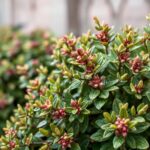

If you want to read more articles like Discover the Best Native Shrubs Western Australia for Your Garden, we recommend you check out our Shrubs category.
Leave a Reply
Related Articles